
Author:
Anne-Mette Jorgensen
Writes about Industrial CO2 Reduction and Climate Policy - Carbon Collectors
European governments are setting ambitious goals for the reduction of greenhouse-gas-emissions, aiming for 50%-55% in 2030 and a carbon-neutral economy by 2050. Industry is expected to deliver a significant part of these reductions. The European Emissions Trading System (ETS) forms a key tool to help industry reduce emissions. ETS emission allowances are now based on a 40% reduction goal, but will soon be adjusted to the 50-55% goal. In The Netherlands, a CO2 levy for industrial emissions is being implemented on top of the ETS cap, which implies a cost of €30 in the beginning and up to €125 per ton of (excess) CO2 emitted by 2030. The Dutch CO2-levy is additional to the ETS and covers a broader range of emitters, including waste incinerators. The Dutch CO2 levy may become superfluous if the price of ETS CO2-emission allowances increases in line with the planned development of the Dutch levy.
There are essentially four options available
As a company, responding to these developments, the best options are to implement solutions that make your activities more energy-efficient and to shift to renewable energy sources. But for many installations, such solutions are not readily available, or they simply do not help to achieve a significant cut in CO2-emissions before 2030, let alone to achieve carbon-neutrality in 2050. In that case, there are essentially four options available:
Whereas options 1 and 2 are based on compensation rather than reduction of excess emissions from your company/installations, options 3 and 4 aim at direct reduction of your own emissions by up to 95%.
Instead of paying for compensation (and tax) of continued, excess emissions (option 1 and 2), you invest in a facility that captures the CO2 before it comes out of your chimney and pay others for transporting and storing the CO2 (option 3 and 4). In some cases, you might even get others to pay you for your CO2, because they need it for their own production processes. Capturing CO2 (option 3 and 4), however, makes energetic and economic sense only when your CO2-emissions are highly concentrated. For diffuse and/or diluted emissions, where the energy use and costs per ton of captured CO2 are high, compensation (options 1 and 2) may be more suitable – depending on the costs of continuing to emit excess CO2.
Do you want to know more about the opportunities for and costs of CO2 capture, use and storage in your particular location?
Ad 1. Buying additional CO2-emission allowances
This option is relevant only for companies that are covered by the European Emissions Trading System (ETS). The Dutch CO2-levy is additional to the ETS and covers a broader range of emitters, including waste incinerators. Both of these systems imply that companies and installations are granted a certain amount of emission allowances for free. Together, these allowances add up to a total amount that is determined and regularly adapted (reduced) by the European Commission[1] or the Dutch government. Being part of the ETS system, you must purchase additional allowances if your emissions exceed what is permitted by the ones you have been granted. If your installation has performed well at reducing its emissions, you can sell the allowances you no longer need to others.
The attractiveness of buying additional allowances depends on their price. Historically, the price of ETS CO2-emission allowances has risen from some €7 in 2018 to some €30 now[2]. By 2030, it is expected that it may have increased to some €50[3], but there is a lot of uncertainty to this projection. How the price of ETS CO2-emission allowances develops, depends on political decisions with regard to reduction targets, on the extent to which companies actually succeed in reducing their emissions and on the success of national initiatives like the Dutch CO2-levy in driving the price up. For emitters based in The Netherlands, the development of the Dutch CO2-levy will set a minimum cost level for excess CO2-emissions, regardless of the ETS price, making it realistic to calculate with a cost of €30,- per ton in 2021, ramping up to €125,- per ton of CO2 by 2030.
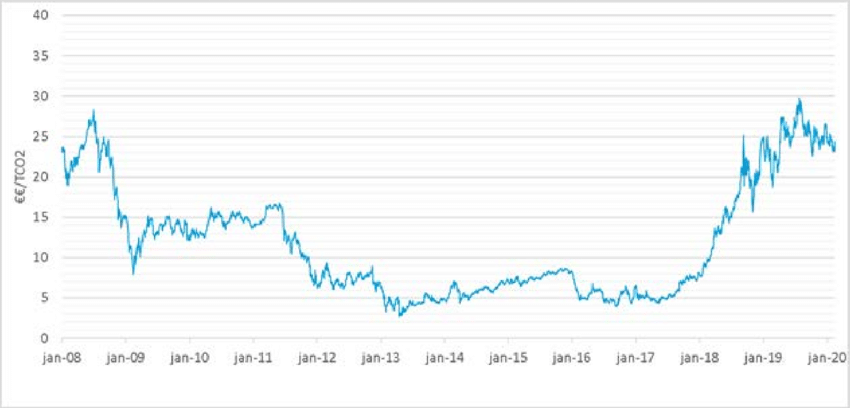
Price development spot market in the EU ETS, 2008-2020, in €/tCO2. Source: Researchgate.net
Ad. 2. Buying carbon credits to offset emissions outside the ETS
Within the EU, voluntary offsetting of emissions through buying carbon credits outside the ETS is not an option for emitters covered by the ETS. Nor is voluntary offsetting included as an alternative to paying a levy for excess CO2-emissions in the Dutch CO2-levy arrangement, though the Dutch system does facilitate cooperation between a wider group of emitters, incl. waste incinerators. In short, this means that VCO is only an option for non-industrial, diffuse sources. In the future, this might change as the need to achieve negative emissions, e.g. through VCOs, Direct Air Capture (DAC) and Biomass-incineration with CCS (BECCS) intensifies [4].
Voluntary carbon offsetting (VCO) usually takes place through purchase of credits from an investment fund or a carbon development company that aggregates the credits from individual projects.
Voluntary carbon offsetting (VCO) may provide a number of specific benefits:
- It provides funding for projects that may actually reduce CO2 emissions at relatively low costs, but are unable to raise local funds, because they take place in poor countries or simply because there is no straight-forward business case. For example, active reforestation or the distribution of clean cooking stoves may be effective and cheap means of reducing CO2 emissions and protecting and restoring natural carbon sinks, but without VCO it simply doesn’t pay for investors to do so. A new development is voluntary carbon projects in the Netherlands for emission reductions that go beyond compliance with policy goals[5]. By allocating money towards projects with low costs per ton of abated CO2, VCO may help to reduce the overall, global costs of climate action.
- VCO projects may help realize a range of additional sustainable development goals, such as reduced poverty, access to clean water, food and clean energy, protection of biodiversity on land and in the oceans. Reforestation and low-carbon agricultural practises, for example, may also contribute to biodiversity and water retainment. As part of Fizzy Transition Ventures, Carbon Collectors is also working on natural carbon sequestration through the construction of ECO-reefs. With these ‘Blue carbon’ projects, we contribute to coastal protection and the protection of fish and other sources of income for coastal communities, while offsetting our own CO2 emissions.
Although VCO-projects aiming at natural carbon sequestration are very popular among certain groups, they also have their limitations. Firstly, there are physical limitations to e.g. the number of trees that may be planted, without having a significant negative impact on space and water available for the production of food and bio-based materials. Secondly, the actual amount of carbon stored (or emissions avoided) is often difficult to assess and in order to be effective, protection and restoration efforts need to be maintained for decades.[6] Meanwhile, there is a risk of the stored carbon getting back into the atmosphere, e.g. as a result of wild-fires, changed practises or – paradoxically – the effects of climate change itself. It is probably because of these limitations that the use of VCO and in particular natural carbon sequestering is seen primarily as a solution for compensating diffuse green-house-gas-emissions, e.g. from transport, cattle and natural sources, such as thawing permafrost bogs, and not for industrial point emissions.
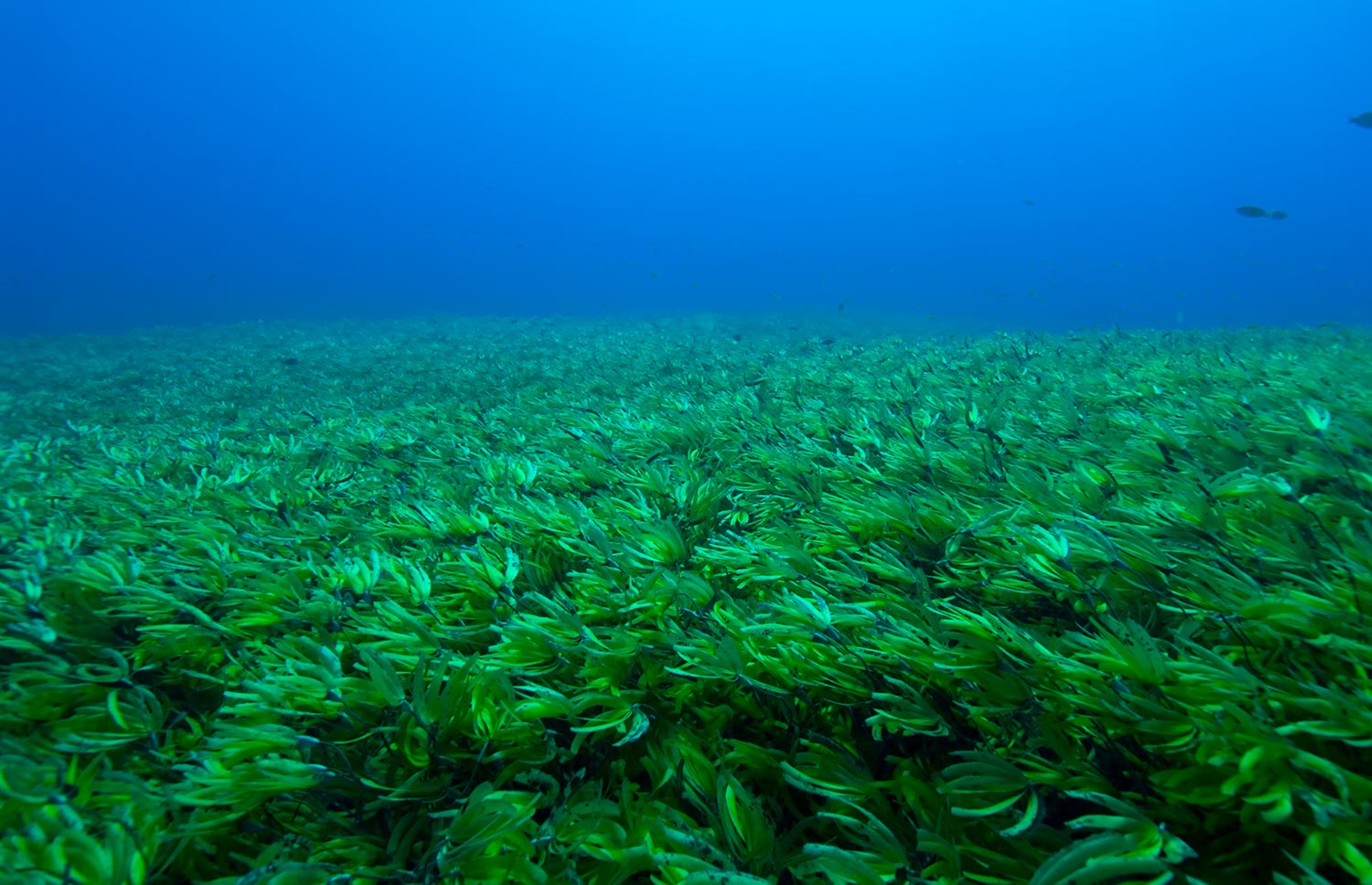
Not only trees store carbon, but also marine habitats like seagrass fields, mangroves and coral reefs.
Ad 3. Capture, transport and Use CO2 (Carbon Capture & Use, CCU)
Basically, there are three ways to capture CO2 from industrial point sources: pre-combustion, post-combustion and through oxy-fuel with post-combustion.[7] There is a growing number of researchers and companies working on smarter and more energy-efficient ways to do this.
Once the CO2 has been captured, the best option business wise would be to sell it to someone else, who can use it as a raw material e.g. for agricultural production in greenhouses, in concrete, plastics, for fuel production, etc. Sometimes it will be possible to find a CO2 user that will buy all of your captured CO2, but more frequently demand will be less than you emit. In such situations a combination of CCU and CCS would be required. Carbon Collectors can accommodate both and over time we can gradually start delivering more CO2 to users and less to storage if and when there’s more demand.
At the moment, the primary limitation to carbon capture and use (CCU) as a major contributor to emission reduction is that the demand for CO2 as a raw material is very small. Global use of CO2 amounts to 230 million tonnes per year, or less than 1% of CO2 emissions and the potential to up-scale in the coming decades is limited[8]. On the longer term, however, CCU certainly could play a bigger role as an attractive and effective way of dealing with your excess CO2.
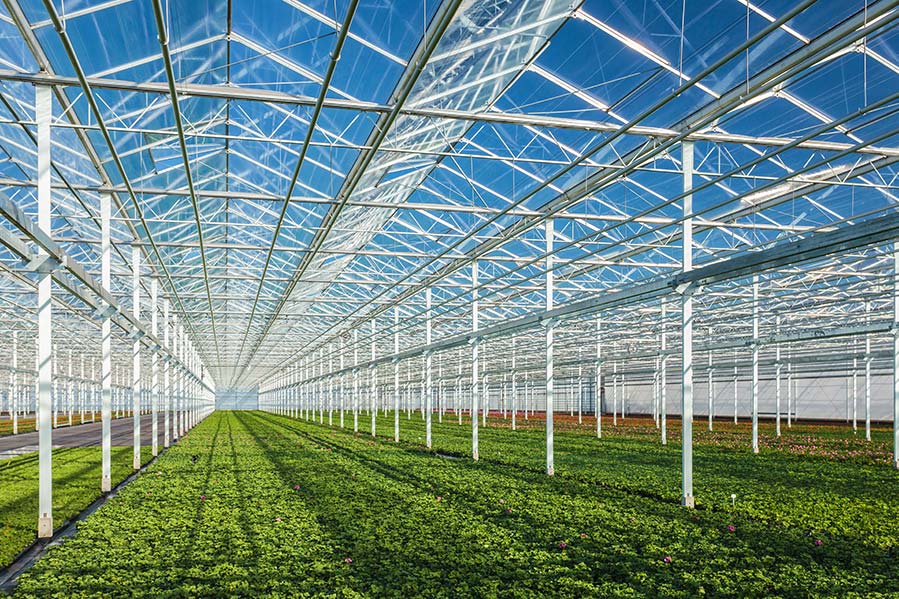
Biogenic CO2 is used in greenhouses to speed up plant growth.
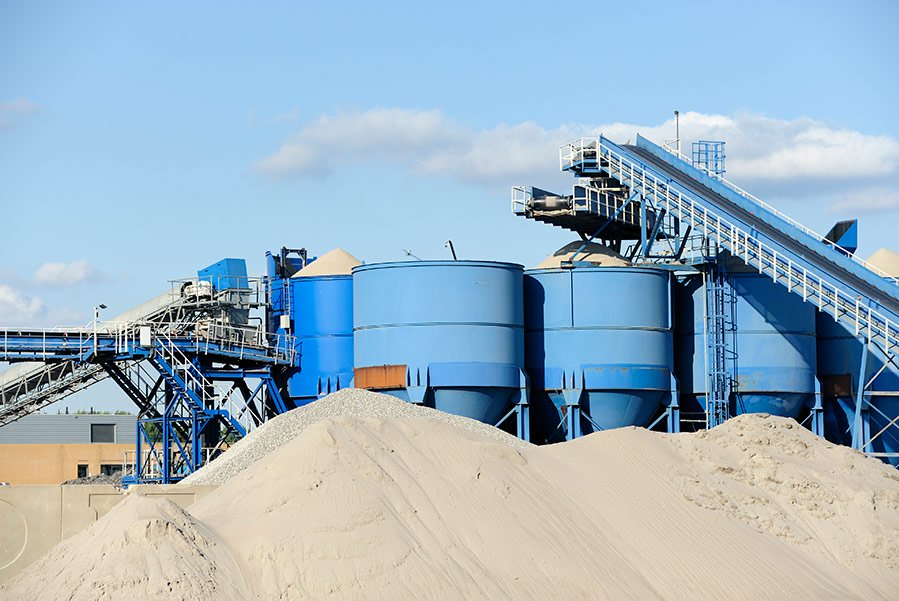
But researchers are also working on turning CO2 into fuels and using it to add strength to cement.
Ad 4. Capture, transport and store CO2 underground (Carbon Capture and Storage, CCS)
Basically, there are three ways to capture CO2: pre-combustion, post-combustion and through oxy-fuel with post-combustion.[7] There is a growing number of researchers and companies working on smarter and more energy-efficient ways to do this.
Once the CO2 has been captured, it is transported to a storage location, where it is injected into a suitable rock formation, such as an aquifer or a former oil and gas reservoir, usually at depths of more than one kilometre. Once the CO2 has been injected it is expected to stay underground for millennia or even ‘forever’. Oil and gas reservoirs are especially well suited to store CO2 as they consist of layers of porous rock formations that have successfully trapped and stored oil and gas for millions of years. In North Western Europe, (projected) storage locations are all located offshore under the North Sea.
All components of CCS are proven technologies that have been used for decades at a commercial scale, e.g. by the oil and gas industry to squeeze out extra oil or gas from depleted reservoirs. What’s new is that we are now going to store CO2 for environmental reasons and at a much larger scale. In Europe, there are currently two large-scale CCS facilities in operation, both located in Norway (Snøhvit and Sleipner), and 13 large scale facilities in various stages of development (in our next blog, we’ll tell you more about this). Most of them intend to use pipelines for transporting the CO2 from the emitter to the storage location. This is fine when you have a large, concentrated group of emitters who are expected to continue to emit a relatively stable amount for many years, and a nearby storage location, with sufficient space to store the projected emissions. Carbon Collectors, in contrast, plan for transportation by ship; a concept that is much more flexible. We can pick up CO2 from anywhere, where there is a waterway nearby, and transport it to the nearest (or cheapest) storage location with enough space. And when the demand for CO2 as a material for products increases, we can change the route and transport it to a paying customer. Currently, CO2-transport by ship is not accepted within the ETS system, but the European Commission is working on an adaptation(we expect an official announcement on this soon). The Dutch CO2-levy system does not make a distinction between transport via pipelines or ships.
The costs of CCS vary greatly depending on the type of industrial process from which the CO2 is captured, the technology used for capturing, the annual volume of CO2 to be stored and the distance from the emitter to the storage location. A 2018 study cites a range of $22.9 to $156.5 per ton of CO2 for a distance of 250km, incl. capture, pipeline transportation and storage[9].
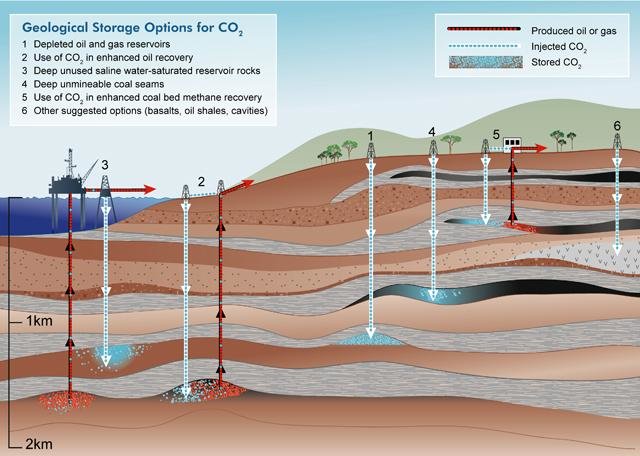
Schematic of the Geological Storage options for CO2. Source: Researchgate.net
Do you want to know more about the opportunities for and costs of CO2 capture, use and storage in your particular location?
[1] Between 2013 and 2020, the total amount of emission allowances within the EU have been reduced with 1.74% each year. From 2021 onwards, this reduction rate is set to increase to 2.2% per year or more. The 2.2% reduction rate is based on a 2030-target of 40% reduction in EU GHG-emissions, whereas the EU has recently agreed to a 2030-target of 50% reduction. https://ec.europa.eu/clima/policies/ets/reform_en
[2] https://www.eex.com/en/market-data/environmental-markets/auction-market
[5]See www.nationaleCO2markt.nl
[6] See for example https://climate.nasa.gov/news/2927/examining-the-viability-of-planting-trees-to-help-mitigate-climate-change/ for a thorough discussion of the potential for reforestation to mitigate climate change.
[7] For more information see e.g. https://en.wikipedia.org/wiki/Carbon_capture_and_storage or https://www.globalccsinstitute.com/why-ccs/what-is-ccs/capture/
[8] https://www.iea.org/reports/putting-co2-to-use
[9] https://www.sciencedirect.com/science/article/pii/S2211467X18300634
HEADQUARTERS
Carbon Collectors
Leonard Springerlaan 35
9727KB Groningen
The Netherlands
